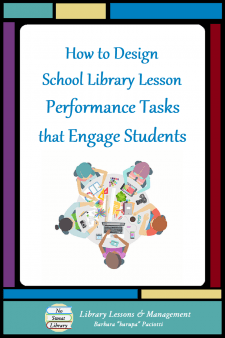 How do we know if students are really engaged in a lesson? Well, are WE engaged?
How do we know if students are really engaged in a lesson? Well, are WE engaged?
We must be as excited about our lesson at the end of the day as we were during first period, or there’s something wrong with the lesson. A truly engaging lesson has us continually fascinated with how students—even our toughest ones—are focused on performing the task we ask of them.
And that’s the secret to an engaging lesson: the performance task. It must be one that goes beyond recalling information; it requires students to apply their learning, and then transfer the learning to a new situation.
So, how can a School Librarian design a performance task that captivates student interest, yet meets standards, fulfills lesson objectives, and supports classroom activities?
UNIT PLANNING, NOT LESSON PLANNING
It’s rare that students visit the school library for days in a row, which is why we’ve become accustomed to planning a single visit lesson. Knowing we may not see them again for a while, we try to cram as much instruction as possible into a lesson, which results in student burnout before they even get to a task.
Instead, we need to take a unit approach to library visits so that each individual lesson builds on what we’ve already presented, adds a new element that is crucial to the task students will perform, and then gives students a purposeful exercise they can transfer to any content area. This holistic view of school library visits allows us to:
- Scaffold National School Library Standards over multiple units, so we gradually meet benchmarks during each school year for each grade level.
Learn more about long-term, scaffolded planning for library lessons by reading about my Library Lesson Curriculum Matrix.
linebreak
- Incorporate Essential Literacies into each unit to give students the skills they can apply to any content area and into the future.
Learn more about the 5 Essential Literacies by reading my series, starting with Reading Literacy.
linebreak - Use a comprehensive Library Lesson Planner, specific to the School Librarian, to backward design the unit for maximum impact.
Download my FREE Library Lesson Planner and learn how to use it.
When we expand our planning in this way, a unit can also include multiple content area collaborations. Since each individual lesson activates prior knowledge of a library lesson, we can invite in any subject area class whose current classroom activity naturally aligns with the performance task of that lesson. The combination of continuity and transfer promotes higher level student learning and achievement.
ELEMENTS OF A LIBRARY LESSON PERFORMANCE TASK
Performance tasks need to focus on student learning, not responses to our teaching. The GRASPS elements set out by Wiggins & McTighe in their book, Understanding by Design, provide a guide for creating such tasks.
| a clear GOAL |
calls for understanding, extended thinking, and transfer |
| a meaningful ROLE |
the student’s “job” within the situation |
| an authentic AUDIENCE |
not just the teacher, but other students & the community |
| a real-world SITUATION |
establishes a purposeful content application of knowledge and skills |
| a PERFORMANCE or PRODUCT |
goes beyond surface features, recall, or a formulaic answer |
| STANDARDS | NSLS & those from a subject area, along with criteria that state what different students are going to achieve: ◦ All students will… (lowest-achieving students) ◦ Most students will… (a majority of students) ◦ Some students will… (most able students) |
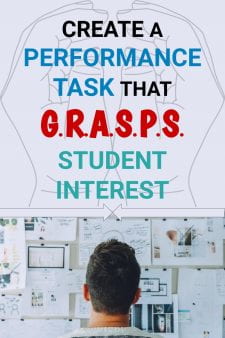 If we keep these elements in mind during unit planning, we can provide a series of lessons with intermediary tasks leading to a final, complex task. None of the performance tasks need to be copious or lengthy; in fact, the simpler and shorter they are, the more likely students will grasp the concepts or skills and use them for other assignments…while thoroughly enjoying them during the library visit.
If we keep these elements in mind during unit planning, we can provide a series of lessons with intermediary tasks leading to a final, complex task. None of the performance tasks need to be copious or lengthy; in fact, the simpler and shorter they are, the more likely students will grasp the concepts or skills and use them for other assignments…while thoroughly enjoying them during the library visit.
The beauty of being in the library is that, if students finish before the period ends, they have time to check out and begin reading a new library book…which is a good purpose for every library visit—to promote reading related to what students have just learned!
EXAMPLE OF A UNIT-BASED SET OF LIBRARY LESSONS
Teaching informational resource lessons are often dreary presentations of Dewey Subject numbers and lists of the school’s online subscription services, with little connection to classroom learning. Applying unit-based lesson planning changes that.
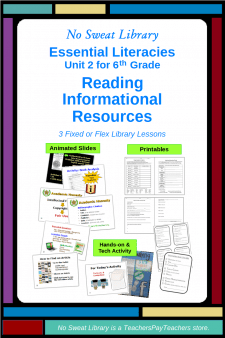 In my unit Reading Informational Resources, I incorporate subject content and literacy skills to create a purposeful, transferable performance task for each lesson. First I identify the 3 main types of library resources students are likely to use—print nonfiction books, print magazines, and online subscription services. Next I contextualize the lessons with what students have learned and are likely to use in their content area classes, in this case ELA and any subject area class that asks students to read and gather information. Finally I design tasks that allow students to build up skills to a final shareable product.
In my unit Reading Informational Resources, I incorporate subject content and literacy skills to create a purposeful, transferable performance task for each lesson. First I identify the 3 main types of library resources students are likely to use—print nonfiction books, print magazines, and online subscription services. Next I contextualize the lessons with what students have learned and are likely to use in their content area classes, in this case ELA and any subject area class that asks students to read and gather information. Finally I design tasks that allow students to build up skills to a final shareable product.
Here is the overview of my “Reading Informational Resources” unit for 6th graders:
- Visit 1 gives students a historical view of information books for youth, then has them identify the organizational structure of selected library books using expository text features they learn in their ELA class, then apply that by inferring Dewey Subjects from the books they’ve analyzed.
linebreak - Visit 2 uses a simple process to help students extract information, summarize, and cite a short print magazine article. This information literacy skill can transfer to any content area when students need to retrieve information, whether from a textbook or other informational resource.
linebreak - Visit 3 introduces students to selected online articles from a school subscription service in order to create an index-card poster comprised of expository text paragraphs with citations. This lesson can be customized for any content area assignment or any online resource, and it uses the ELA and information literacy skills they’ve already learned during the two prior lessons. Should a librarian not have a pertinent subscription service to use, I provide an alternative set of online articles from free student news sites to create a Technology News poster.
How do the performance tasks align with GRASPS?
| GOAL | Learn skills for extracting, summarizing, and citing information |
| ROLE | Be a partner or group member for discussion and production |
| AUDIENCE | Fellow students and visitors to the school |
| SITUATION | Use acquired skills to present content in abbreviated form |
| PERFORMANCE/PRODUCT | Each performance builds skills to create final product |
| STANDARDS | NSLS clearly defined at beginning of planning process |
While this unit’s performance tasks may seem rudimentary for sixth graders, they are the start of the scaffolding needed to bring students up to benchmarks by the end of their stay in middle school—especially if students have not had a strong library program during their elementary years.
ENGAGING TASKS FOR FLEX OR FIXED SCHEDULES
Having used these performance tasks with my own students, I know they are engaging. They provide interaction between students (an important consideration for middle school), they are short enough to “stick,” and they all provide a product for teachers to give a daily grade, something I have for all of my library lessons.
The adaptability of unit planning allows these lessons to also be used by a School Librarian who has a fixed schedule of library classes with students. In fact, my Essential Literacies units could comprise several weeks of scheduled library lessons with sixth graders!
![]()
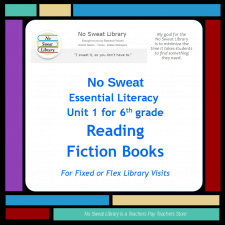 |
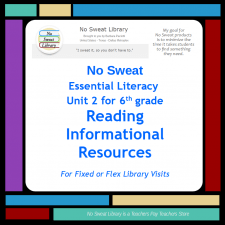 |
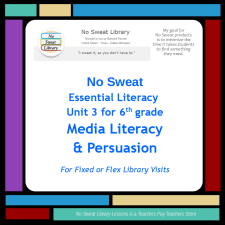 |
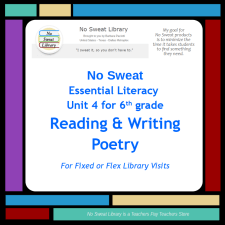 |



Thank you very much for the information provided! I was looking for this data for a long time, but I was not able to find the trusted source.
Cubical Solution
Glad I’ve been able to provide the information you needed. Please, let me know if you have any other needs and I’ll try to help.
BrP